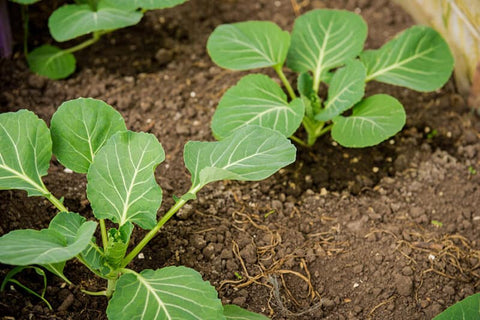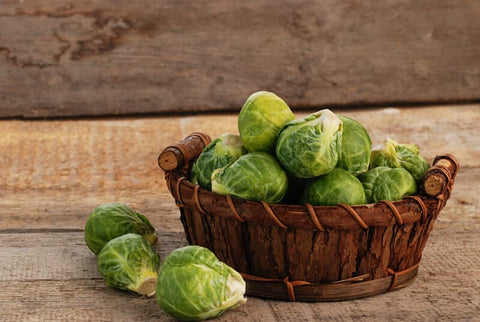Transplanting seedlings is a crucial step in the journey from seed to harvest. It's the moment when delicate young plants make the transition from their cozy seedling trays to the great outdoors or larger containers. Done correctly, transplanting can set the stage for robust growth and abundant harvests. However, it's a process that requires care and attention to ensure the health and vitality of your seedlings. In this blog, we'll explore the essential techniques for successful transplanting, covering everything from timing and preparation to proper handling and aftercare.The following content also has some reference value for raised garden beds.
Understanding Transplanting: Why It Matters
Transplanting seedlings involves moving them from their original containers or seedling trays to larger pots, garden beds, or outdoor soil. This process is essential for several reasons:
- Root Development: Transplanting encourages healthy root development by providing seedlings with more space and nutrients to grow. It allows roots to spread out and establish themselves in their new environment, leading to stronger, more resilient plants.
- Optimal Growing Conditions: Transplanting seedlings allows you to place them in environments with optimal sunlight, soil, and moisture conditions for their specific needs. This ensures that they have the best possible chance of thriving and reaching their full potential.
- Spacing and Air Circulation: As seedlings grow larger, they need adequate space and air circulation to prevent overcrowding and disease. Transplanting ensures that each plant has enough room to spread out and access sunlight and air, reducing the risk of fungal infections and other issues.
- Seasonal Timing: Transplanting allows you to align your seedlings' growth with the appropriate growing season for your region. By transplanting at the right time, you can take advantage of favorable weather conditions and ensure that your plants have enough time to mature and produce a bountiful harvest.

Essential Techniques for Successful Transplanting
Now that we understand the importance of transplanting let's explore some essential techniques to ensure successful transplantation:
- Timing is Key: Timing is critical when it comes to transplanting seedlings. Ideally, seedlings should be transplanted when they have developed their first true leaves and are sturdy enough to handle the transplant process. This is typically 2-4 weeks after germination, depending on the plant species.
- Prepare Your Seedlings: Before transplanting, prepare your seedlings by gently watering them to moisten the soil. This will help the soil stick together and reduce the risk of damage to the roots during transplantation. If seedlings are root-bound (with roots circling the bottom of their containers), gently loosen the roots before transplanting to encourage outward growth.
- Choose the Right Location: Select a suitable location for transplanting your seedlings, taking into account factors such as sunlight, soil quality, and spacing requirements. Ensure that the soil is well-drained and rich in organic matter, and choose a spot that receives adequate sunlight for your plant species.
- Prepare the Transplant Site: Prepare the transplant site by loosening the soil and removing any weeds or debris. If transplanting into a garden bed, amend the soil with compost or organic fertilizer to provide nutrients for your seedlings. If transplanting into containers, ensure that they have drainage holes and are filled with a well-draining potting mix.
- Handle with Care: When removing seedlings from their containers, handle them with care to avoid damaging the delicate stems and roots. Gently squeeze the sides of the container to loosen the soil, then carefully lift the seedling out by its leaves or root ball. Avoid pulling on the stem, as this can damage the plant.
- Plant at the Right Depth: Plant seedlings at the same depth as they were in their original containers, ensuring that the soil level is even with the top of the root ball. Avoid burying the stem too deep, as this can lead to rotting or stem damage. Firmly pat the soil around the base of the seedling to secure it in place.
- Water Thoroughly: After transplanting, water your seedlings thoroughly to help settle the soil around the roots and reduce transplant shock. Use a gentle spray or watering can to avoid disturbing the seedlings, and water until the soil is evenly moist but not waterlogged. Keep the soil consistently moist in the days following transplanting to help seedlings establish themselves in their new environment.
- Provide Protection: Depending on the weather and environmental conditions, your seedlings may benefit from temporary protection after transplanting. Consider using row covers, cloches, or shade cloth to protect seedlings from harsh sunlight, strong winds, or sudden temperature fluctuations.

Aftercare and Maintenance
After transplanting, it's essential to provide ongoing care and maintenance to ensure the continued health and vigor of your seedlings:
- Monitor Moisture Levels: Keep a close eye on soil moisture levels in the days and weeks following transplanting. Water seedlings regularly, especially during hot or dry weather, to prevent wilting and dehydration.
- Fertilize Appropriately: Once seedlings have established themselves in their new environment, consider applying a balanced fertilizer to provide essential nutrients for healthy growth. Follow the manufacturer's recommendations for application rates and frequency.
- Mulch to Conserve Moisture: Apply a layer of organic mulch around the base of your seedlings to help conserve moisture, suppress weeds, and regulate soil temperature. Mulching also helps protect delicate roots from damage and promotes soil health over time.
- Provide Support as Needed: Some seedlings may require support as they grow larger and heavier. Stake tall or vining plants such as tomatoes, peppers, or cucumbers to prevent them from toppling over or becoming damaged by strong winds.
- Monitor for Pests and Diseases: Keep an eye out for signs of pests or diseases on your seedlings and take prompt action to address any issues. Practice good garden hygiene by removing infected or diseased plants and disposing of them properly to prevent the spread of pathogens.
- Thin Seedlings as Necessary: If seedlings are overcrowded or competing for space, consider thinning them to allow for better airflow and light penetration. Remove the weakest or smallest seedlings, leaving only the healthiest and most vigorous ones to thrive.

Conclusion
In conclusion, transplanting seedlings is a critical step in the gardening process that requires care, attention, and proper technique. By following the essential techniques outlined in this blog and providing ongoing care and maintenance, you can ensure the healthy growth and vitality of your seedlings. Whether you're transplanting into a garden bed, container, or raised bed, taking the time to transplant seedlings correctly will set the stage for a successful growing season and a bountiful harvest. So, roll up your sleeves, grab your trowel, and get ready to transplant your seedlings with confidence and skill!









